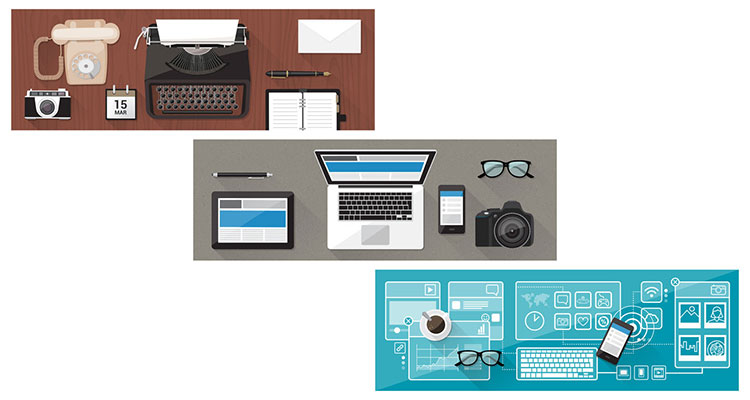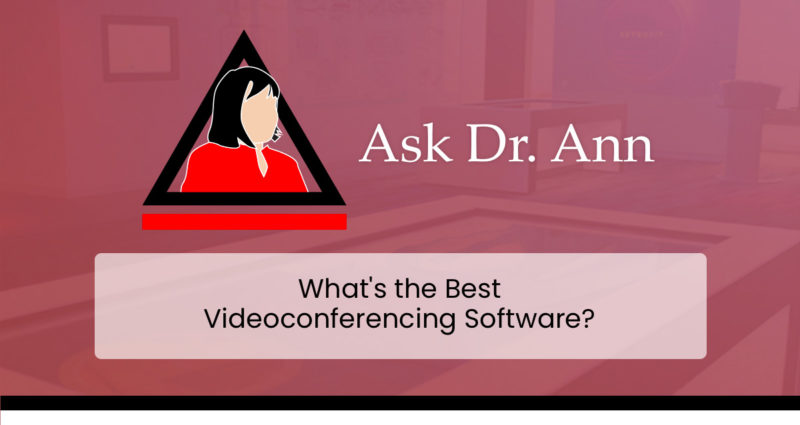The Evolution of Technology Spaces
Evolving how we understand and design collaborative spaces
One of the most consistent things we see in corporate facilities/classrooms/lecture halls worldwide is that they have been equipped with some manner of technology package that is there for the users of that space to better communicate with others. And one of the most consistent things about these spaces is that in general… they are “meh.” They aren’t terrible, they don’t blow your socks off, they get the job done… but they aren’t without issues.
And that is what I want to talk about. Let’s not focus on the technology stack in use, as there are lots of people who are able to write far more effectively than I about that. What I am going to talk about is how we approach these spaces.
Where did we come from?
About 30 years ago, I thought I was applying for a job at a stereo shop and accidentally ended up in an industry that I had never heard of. As it turns out, this was a pretty good time to get involved as much of what we see as commonplace today was really just starting to become a thing. Over this time, we have seen significant changes that impact all facets of how people work/communicate/interact. While the rise of the internet and its impact on communications has been unlike anything seen in the last hundred years, the changes in the supporting technology have also been staggering. For the most part these changes have been great, it has massively changed how we all work and how we interact. However, this change has not been without some significant challenges. Over a series of articles, I will talk about what we have missed out on and how we can do a bit of a reset in order to get in front of these changes in order to provide better and better experiences as we move forward.
Employee technology, end user technology, there are many names for the technology and tools that we provide in order to enable employees to do their job. and all of that technology fits into two rather broad categories. Personal tech/tools and then shared/corporate resources.
Personal technology, of course, is the staple of the day-to-day grind. Laptops, coding workstations, mobile phones, headsets and of course the plethora of cables, adapters and various widgets to connect it all together and allow employees to work seamlessly. No matter if they are in the office, at home, at 35,000 feet or in a foreign hotel. these are the things that we define, procure, issue, track and refresh over time that are front and center in everyone’s mind.
The shared resources are a bit trickier and have also evolved quite a bit over the last decade. and that pace of evolution appears to be speeding up. I am talking of course about conference spaces, meeting rooms and even the software tools that we use in these spaces and as part of our day to day.
The changing landscape of conference rooms/technology spaces
Twenty years ago, conference rooms were abundant… but barren as far as “technology” goes. Technology in a conference room used to mean a whiteboard, some flipcharts, a box of 27 markers that don’t clearly state if they are for the flipchart or the whiteboard (who hasn’t done that once or twice?) and of course, half of them are out of ink. And from time to time… some sort of video display. But this was rare due to the costs and frequently it was a royal pain to use.
Then the display revolution came upon us and the cost of displays rapidly plummeted. With this, we started to *throw* (I’ll come back to this) them in all sorts of rooms. And it was great! We can show what is on our laptop now!!! However, more than a few issues started to show up really quickly;
- You know, this projector is just not bright enough for this room!
- Wow… is that screen ever small — we can’t read it!
- Has anybody seen the remote? (Alternately: “Does anybody have some AA batteries??”)
- Hmmm… this VGA cable seems to be damaged… why is the image all green???
I could go on, but it’s likely that some people are twitching at this point so I will leave it there.
From these problems, we started to see many solutions arise that allowed us to quickly add control to the rooms so that at least controlling the display and making consistent use of it was possible. And we have continued to grow from there.
Nowadays, the reality is that in most cases, the edict is to put a standardized technology stack in every single room. No big surprise there. As things have continued to get easier and easier, technologies that were reserved for only the most VIP rooms 20 years ago are now commodity items. As a result, videoconferencing and flat panel displays can go everywhere.
There have been two big changes that we can thank for this:
1. The commoditization of flat panel displays. What was $5,000 ten years ago is now $750.
2. The democratization of videoconferencing. The pervasiveness of VC capabilities we now see is due to many changes in the underlying tech, but to my mind, we owe the greatest thanks to Bluejeans and Zoom. These companies have allowed us to consistently say, “It just works!” — which was NOT something you heard about VC 20 years ago.
So here we are with all this great tech, network access to control it all, better and better quality all the time… but we still have one big issue that hasn’t changed from those dark days of 20 years ago.
Approaching the design of a space in a new way
Earlier in the article I said that we “threw” the technology in the room. That was deliberate. Even today, in general- the room is designed, and the design folks take great care in the fabrics, colours, furniture… and then we throw the tech in wherever it might fit. Sound familiar? And we still do the same thing. Rooms/buildings are designed and then later in that process we add in whatever that tech stack is. The problem with this however is that we end up with a room… and then the technology IN the room. As opposed to a room that was designed around an overall experience. REGARDLESS of the technology.
Too much of the time we find a new tech gadget and decide we are going to add it into the room WITHOUT thinking about how the entire experience is affected. Essentially throwing a gadget into the room and hoping that it will solve a problem. As opposed to taking a look at the entire room and asking a few key questions in order to define the solution around that.
Define the problem, then find the solution. But always define an experience. Not a list of equipment, not a wiring diagram, but an experience.
When we explore what that experience is, there will be things that we are able to do today. And there will be things that we cannot do based on either hardware limits, security concerns, software limits or even cost. But if we have designed that ideal experience, then we will be able to keep working towards it. Just because we can’t easily do it today does not mean that there won’t be some change in six months that makes it feasible. And if we are not focused on that ideal experience, we may not see the significance of a particular new piece of hardware or software that could further that goal of an ideal experience.
Where do we go next?
In my next article, I will start zeroing in on more specifics. The first thing we have to understand is the need to ensure that we satisfy ALL the various stakeholders in a conference space and after that, understand all the individual technology areas in order to look at some ideas around where we are going.
This is my first stab at putting ideas to paper so I welcome as much discussion as possible. I am by no means the final word on anything (as my children frequently remind me) so I really want to hear from others that agree or disagree with what I am saying. and if you have been trying some of these things, please share your experiences.
Thanks for reading.
Chris Gillespie is a 30-year veteran of the AV/VC industry. He has worked in all aspects of the industry and has some unique insights that lend themselves to better outcomes for all.
This column was reprinted with permission from Christopher Gillespie and originally appeared here.






